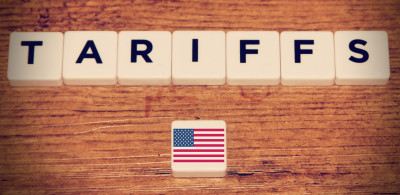Quick take: A 25% tariff on everything going to the U.S. and a matching tariff on specific products from the U.S. are no longer theoretical risks—they’re real possibilities. This isn’t just policy talk if you’re a Canadian business that ships goods across the border. It’s about your costs, your contracts, and your bottom line. The time to act? Yesterday!
Let’s cut through the noise: the United States is shifting gears on global trade, and if you’re a Canadian business moving goods across borders, this isn’t just background chatter—it’s a fundamental change that could affect your supply chain.
Tariffs are back, and they’re expanding
Remember when tariffs were mainly a “China issue”? Not anymore. The U.S. isn’t just revising policies with traditional rivals; it’s also making significant adjustments that impact long-standing partners—Canada included. We’re talking about a 25% tariff on everything going to the U.S. and an additional 25% tariff on a specific list of products imported from our American neighbours. In response, Canada reciprocates with a matching 25% tariff on a particular list of products imported from the U.S.
Here’s the shortcut behind this: the International Emergency Economic Powers Act (IEEPA). It allows the U.S. to apply tariffs under “national security.” In other words, decisions can happen quickly, without lengthy negotiations. You could wake up one morning to find out it was tweeted in the middle of the night that tariffs will now apply. Welcome to 2025, where reality sometimes feels like an alternate timeline.
Why you should actually care
- Canada is highly dependent on U.S. trade: The United States is Canada’s largest trading partner, with billions of dollars crossing the border daily. Any disruption, like a sudden 25% tariff, can ripple through the entire Canadian economy quicker than you think.
- Costs are going up—and fast: When billions of dollars are traded duty-free, adding 25% tariffs makes those numbers grow fast. This isn’t a minor adjustment; it’s a significant cost that will hit your bottom line quickly.
- The USMCA is under review: The trade agreement is now being reconsidered, and some advantages might be at risk. Technically, it is open for revision next year. We’ve taken for granted free trade with our closest partner, but that could change. Beyond well-known issues like Canada’s dairy sector, broader revisions could impact key industries.
- The clock is ticking: We need to look at our supply chains—and fast. Delaying adjustments could leave your business vulnerable to sudden shifts in tariffs, regulations, and costs.
This isn’t an isolated incident. Instead, it’s part of a broader trend. Don’t take the risk of assuming it won’t happen again!
It’s not just about tariffs anymore
- Non-tariff barriers: The U.S. is reinforcing “Buy American” rules, which could limit Canadian access to U.S. government contracts.
- Capital controls & export restrictions: If you have U.S. partners, expect tighter regulations.
- Sanctions: As per President Trump, American economic measures could be applied to Canada even if they align with U.S. interests.
If you’re exporting to the U.S., this means:
- Expect border delays: Many shipments could suddenly shift to a cash-on-delivery (COD) status, and brokers might require payments before releasing goods to limit their financial exposure.
- Payment adjustments: Participating in Automated Clearing House (ACH) payment systems can help streamline transactions and reduce delays.
- Surety bond impact: If tariffs are applied, the current amount of your surety bond may no longer be sufficient. You must increase the bond amount with your insurance company to cover the higher duties and taxes.
- Valuation practices under scrutiny: Exporters to the U.S. might be tempted to lower the declared value of goods to reduce tariff costs, but this is not recommended. It will be easy for authorities to spot inconsistencies based on your shipment history, and artificially lowering prices to avoid taxes is considered fraud. Yes, the F-word—fraud—and it’s not worth the risk.
Conversely, some shippers might be pleasantly surprised to discover they’ve been overvaluing their shipments. Since free trade made valuation less critical, there was little incentive to optimize. Now’s the time to review and adjust if you can legally reduce your declared values.
• Reevaluate logistics and customs strategies: Some companies may find it beneficial to maintain inventory within the U.S. and sell directly from there. This approach can allow businesses to move goods across the border at transfer pricing or through intercompany transactions, potentially mitigating the direct impact of tariffs on each shipment.
Key actions for exporters
- Analyze your exposure: Identify where your business is vulnerable to U.S. tariffs. Calculate the total projected surtax for your exports to the U.S. Are you still competitive? This is the time to reassess your pricing models.
- Talk with your clients: Initiate discussions with your American partners about potential cost adjustments, supply chain impacts, and strategies to mitigate risks together.
- Review contracts: Ensure payment terms and responsibilities for tariffs are clearly defined with your U.S. partners. And make sure you are following the contract. If the agreement states that the client is responsible for customs, but your shipping department continues operating as if Delivered Duty Paid (DDP), stop and adjust it now. No one noticed or cared because it was free trade, but this oversight can become a costly mistake with the current risks.
- Act proactively: Prepare as if tariffs could return at any time. If they don’t, you’re still ahead.
If you’re importing from the U.S.
With a 25% tariff imposed on specific products from the U.S., the cost structure for many businesses will shift significantly. Products you rely on may become much more expensive, impacting your margins and pricing strategies.
Key actions for importers
- Identify affected products: Determine which items on the tariff list affect your business directly. The first list of HS codes is published here.
- Diversify suppliers: Reduce dependency on U.S. suppliers by exploring alternative sources from Canada or other countries. National pride may kick in, with Canadian consumers viewing goods from countries other than the U.S. more favorably. Plus, a 25% surtax is so high that alternative suppliers—even farther away—could become competitive, even after factoring in transportation costs.
- Review cost structures: Adjust your pricing strategy to account for increased costs.
- Review customs and logistics processes: Some companies might need to implement drawbacks when re-exporting products—procedures they never had to consider before. This change adds new layers of trackability, reporting requirements, and affects cash flow management. Staying ahead means reassessing these processes now to avoid costly surprises later.
What should you do?
- Take it seriously: Even if you feel tariffs won’t apply, assume they could. Don’t wait for confirmation—prepare now.
- Audit your supply chains: Identify weak points in logistics, customs, and overall operations.
- Consider proactive changes: Implement strategies you would use if tariffs were already in place, where it makes sense. This will protect you from sudden changes and position your business to adapt quickly.
- Diversify: Reduce dependency on any single country or trade route.
- Stay updated: Regulations are evolving quickly. Stay informed.
- Consult trade experts: Seek advice from professionals who understand U.S. policies and Canada Customs.
- Share this article: You may know someone who needs to read it—whether it’s a colleague, client, or industry partner. Staying informed is the first step to staying ahead.
Final thought: The U.S. is redefining its role
The U.S. is no longer positioned as the global trade stabilizer. Instead, it’s focusing on its priorities. This isn’t just a challenge for Canadian businesses—it’s a chance to rethink strategies, build resilience, and adapt to a changing global landscape. If you’re waiting to react, then you’re already behind.

